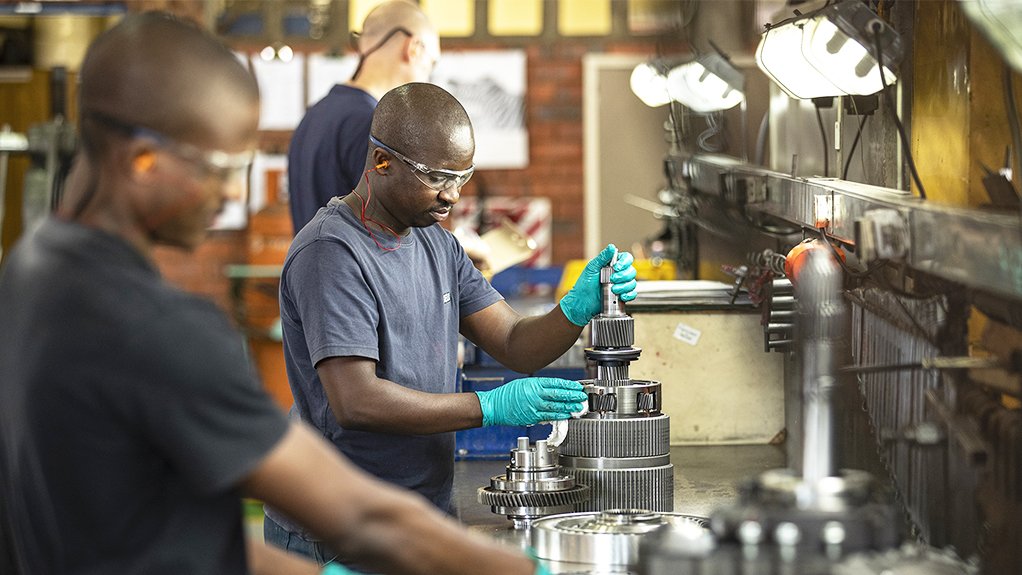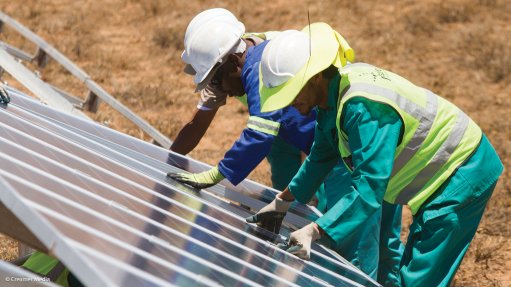A 10% increase in manufacturing investment could yield a 13% boost to the economy
A mere 10% increase in manufacturing investment in South Africa would result in a gross domestic product (GDP) contribution increase of 13% in South Africa, along with a 9% increase in fiscal revenue and an 8% increase in employment creation, Pan African Investment and Research Services economist Dr Iran Abedian has said.
“Manufacturing in South Africa, given the structure of our economy, has a positive multiplier effect to the tune of 1.3 times because if you inject 10% into manufacturing, the total economy is better off 13%.
“So for every rand that you inject into manufacturing investment, you're going to get R1.30 back,” he said on September 8, in Johannesburg, where he presented a report titled ‘Revitalising South Africa’s Manufacturing Sector’, which was prepared for buy local advocacy campaign Proudly South African (Proudly SA).
Proudly SA commissioned the report to unpack the state of the country’s manufacturing sector and the potential impact of localisation, as well as the multiplier effect thereof on the economy.
The study, which is the third in a series of research pieces by Abedian, surveyed the South African job market, as well as opportunities for job creation in traditionally labour-intensive sectors.
Manufacturing has historically been credited as a key driver of higher-value job creation and for the increase in living standards globally. In South Africa, the sector has been vital to the economy and continues to be important, even though it has become severely depressed in recent years.
Although far less than in years prior, manufacturing still contributes significantly towards South Africa’s GDP. In 2021, the sector contributed 13% of GDP with a gross value added (GVA) of R523-billion.
Additionally, the sector has one of the highest total turnovers by industry.
The 2021 GVA, although an increase from 2020’s low of R490-billion, was still significantly lower than the pre-pandemic GVA, such as 2019’s GVA of R559-billion.
Before the pandemic, the sector employed about 1.8-million people, which has declined to about 1.4-million.
This highlights the material impact that the Covid-19-induced economic crisis has had and continues to have on the manufacturing sector.
In 2020, an industrialisation intensity index for selected emerging market economies ranked South Africa lowest out of select emerging market countries, including China, Indonesia, Mexico, Poland, Vietnam, India, Turkey, Argentina, Brazil and Bangladesh.
This was owing to South Africa having both low manufacturing value added (MVA) and low technological complexity in manufacturing.
The index was measured by taking the average of the share of MVA in GDP and the share of medium-and-high-technology activities in MVA.
“The manufacturing sector is in urgent need of a turnaround, in terms of its contribution to the economy and its export competitiveness. Investment into manufacturing was at very low levels even in the pre-Covid-19 years, which is part of the problem when it comes to the sector's declining contribution to the economy,” Abedian stated.
An additional side effect of South Africa’s de-industrialisation is a falling tax contribution by the manufacturing sector, from 16.7% in 2017 to 13.2% in 2020, which further impacts on government’s ability to deliver effective services to the population.
As part of the study, Abedian analysed what the economy-wide impact would be of a policy shock to the manufacturing sector, simulating a scenario where a 10% shock is induced on investment to all manufacturing and the sub-sectors of agroprocessing, meat, sugar, furniture, automotive, steel and pharmaceuticals.
Through this 10% shock injection into the manufacturing sector, an estimated 75 300 jobs would be created in manufacturing, with the most being in mining (about 11 500) and in agriculture (about 10 100).
Abedian noted that, over the past 30 years, manufacturing had become increasingly more capital intensive, automated and, therefore, created fewer employment opportunities per unit of investment.
The jobs that were created, however, were now more skilled and better paid. Better paid jobs, in general, however, will have a higher multiplier impact on the rest of the economy.
Abedian said he believed that a 10% investment injection to the manufacturing sector was not only eminently possible, but sorely needed for the sake of the economy.
“The success of South Africa’s reindustrialisation rests on an effective partnership framework within which the public sector implements a well-coordinated, intergenerational infrastructure provision programme while the private sector in diverse industries focuses on industry-specific dynamics,” he said.
Moreover, manufacturing locally and buying locally also requires local retailers and local distributors to play their part.
“It's no good if manufacturers manufacture locally, but then local distribution channels, wholesalers and supermarkets don't come to the party,” Abedian said.
He noted how increased manufacturing activity and deliberate investment in manufacturing, driven by a clear localisation drive, would also have a strong impact on the services, construction, trade, transport, communications and finance sectors.
The report highlights the fact that, even if the investment envisaged is directly into manufacturing sectors, forward- and backward-linked service sectors would also benefit substantially owing to the multiplier effects of the circular flow.
“One thing we each have at our disposal is our buying power. Through that purchasing power, we all have the opportunity to turn the tide towards growing the economy again. The manufacturing sector is labour intensive and that is why the focus should be on building this sector,” Proudly SA CEO Eustace Mashimbye added.
Abedian’s report is made up of four parts.
The first section provides an overview of the country’s manufacturing sector, which includes data on global competitiveness, labour force, GDP contribution, challenges faced by the sector, as well as environmental impact.
The second focuses on localisation and government procurement, dissecting key manufacturing sub-sectors, their skills intensity and the potential for job creation.
The third models the manufacturing sector in the South African economy, where the research demonstrates simulations of the job creation and multiplier effect of investments into various sectors, sub-sectors and industries.
Finally, policy implications and the way forward are addressed. The last section unpacks effective public-private partnership imperatives which can bring about infrastructure provisions, as well as management of sector-specific dynamics.
The full report is available at: https://bit.ly/PSAResearch2022
Comments
Press Office
Announcements
What's On
Subscribe to improve your user experience...
Option 1 (equivalent of R125 a month):
Receive a weekly copy of Creamer Media's Engineering News & Mining Weekly magazine
(print copy for those in South Africa and e-magazine for those outside of South Africa)
Receive daily email newsletters
Access to full search results
Access archive of magazine back copies
Access to Projects in Progress
Access to ONE Research Report of your choice in PDF format
Option 2 (equivalent of R375 a month):
All benefits from Option 1
PLUS
Access to Creamer Media's Research Channel Africa for ALL Research Reports, in PDF format, on various industrial and mining sectors
including Electricity; Water; Energy Transition; Hydrogen; Roads, Rail and Ports; Coal; Gold; Platinum; Battery Metals; etc.
Already a subscriber?
Forgotten your password?
Receive weekly copy of Creamer Media's Engineering News & Mining Weekly magazine (print copy for those in South Africa and e-magazine for those outside of South Africa)
➕
Recieve daily email newsletters
➕
Access to full search results
➕
Access archive of magazine back copies
➕
Access to Projects in Progress
➕
Access to ONE Research Report of your choice in PDF format
RESEARCH CHANNEL AFRICA
R4500 (equivalent of R375 a month)
SUBSCRIBEAll benefits from Option 1
➕
Access to Creamer Media's Research Channel Africa for ALL Research Reports on various industrial and mining sectors, in PDF format, including on:
Electricity
➕
Water
➕
Energy Transition
➕
Hydrogen
➕
Roads, Rail and Ports
➕
Coal
➕
Gold
➕
Platinum
➕
Battery Metals
➕
etc.
Receive all benefits from Option 1 or Option 2 delivered to numerous people at your company
➕
Multiple User names and Passwords for simultaneous log-ins
➕
Intranet integration access to all in your organisation





















